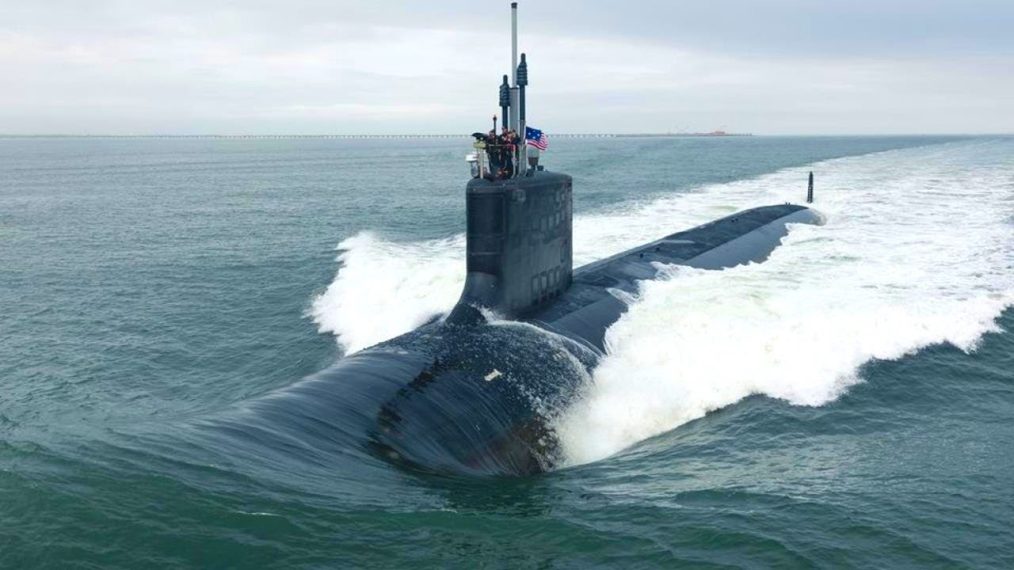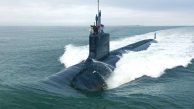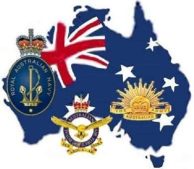
New ‘Quantum Sensors’ Could Make America’s Billion-Dollar Submarines Obsolete
Popular Mechanics
During World War II, American submarines in the Pacific demonstrated unparalleled stealth, slipping past enemy patrols, launching surprise attacks, and crippling Japanese supply lines. Over the decades, submarine detection technology has advanced significantly, incorporating passive and active sonar, surface-scanning radar, and magnetic anomaly detectors. However, submarines have also become stealthier in response. Yet, a fundamental navigational limitation still forces modern submarines to break their cover: the need to surface periodically to recalibrate their position using GPS.
Submarines rely on inertial navigation systems (INS) to determine their location, velocity, and orientation. However, these systems suffer from integration drift, where small measurement errors accumulate over time, leading to significant deviations from the actual position. To correct these errors, submarines must briefly expose themselves near the surface to receive updated positioning data from GPS satellites. This vulnerability not only risks detection but could be rendered ineffective if adversaries jam or disable GPS signals.
To overcome this issue, the U.S. Navy is exploring quantum navigation technology, which promises to eliminate the need for GPS-dependent recalibration. Quantum sensors could revolutionise submarine warfare by improving detection range, refining navigation precision, and enhancing onboard computing power. The real challenge, however, is deploying this technology before adversaries like China develop their own quantum-based anti-submarine detection systems.
Traditionally, submarines maintain stealth through acoustic silence, deep-water concealment, and electromagnetic signature reduction. However, the advent of quantum sensor technology could compromise these methods. Two key quantum phenomena—quantum entanglement and quantum superposition—could significantly enhance submarine detection capabilities. Entanglement enables sensors to correlate data over vast distances, while superposition allows quantum computers to process massive amounts of data simultaneously, vastly improving detection and computational efficiency.
Currently, detection methods such as gravimeters and magnetometers are limited in range, typically effective only within several hundred feet. However, quantum-enhanced versions of these devices could extend detection capabilities to several miles. Quantum gravimeters, already used in scientific fields like geology and climate research, measure gravitational variations with extreme precision. Adapted for submarine warfare, these sensors could map subtle changes in Earth’s gravitational field, effectively detecting submerged vessels without active sonar.
Quantum magnetometers, such as the Superconducting Quantum Interference Device (SQUID), offer another powerful tool. Conventional magnetometers on anti-submarine aircraft have an effective range of about half a mile. SQUID-based sensors, however, could increase this range to nearly four miles, dramatically improving the ability to detect submarines from the air. Such advances could make it exceedingly difficult for submarines to remain undetected in contested waters.
Moreover, quantum computing could facilitate autonomous submarine operations, enabling unmanned underwater vehicles (UUVs) to execute complex combat missions without human intervention. The first large autonomous XLUUV-class submarines are already being integrated into the U.S. Navy for specialized operations, and quantum-enhanced AI could further expand their capabilities.
China currently leads in quantum research, with estimated government investments exceeding $15 billion, compared to the U.S.’s $3.8 billion. While the Pentagon acknowledges the strategic importance of quantum technology, funding remains inconsistent. If the U.S. fails to close the gap, adversaries may gain a decisive edge in undersea warfare. The race for quantum supremacy will determine the future of submarine stealth and detection, shaping naval warfare for decades to come.



